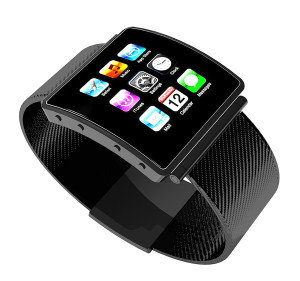In 1975 when telephones hung on the wall and watches only told time there were two equally ridiculous marketing marvels. One was the pet rock and the other was the mood ring. These products were fun, made a few people money and were then lost to the cultural phenomenon dust heap. That is until last week when Apple announced the Apple Watch.
The Apple Watch is not the first in “wearable” technology. We have Google Glass, the Samsung watch as well as a host of other wrist fitness/activity monitors such as the Fitbit and Jawbone. The Apple Watch, however, is truly the “mood ring” of the tech era. Make no mistake, this is no marketing gimmick; it could be a marketer’s dream come true.
What could possibly be more important to the marketer than the mood of the consumer? The ability to tap into the mindset, personal habits and behaviors of consumers is not new and has expanded with each iteration of mobile devices (Pietrzak, 2013). The mobile phone and apps provide abundant information to marketers but the information is limited. The marketer knows what you like by examining your search and “like” behaviors and can respond by pushing to you similar products (Pietrzak, 2013). However, mood has remained out of reach.
The Apple Watch, however, may be the key to unlocking the full potential of neuromarketing. Businesses and marketers know what consumers want but why consumers want a product has been elusive and is the driver of this science (Nobel, 2013). It comes as no surprise that people are driven by things that make them feel good and that includes the purchases they make (Nobel, 2013). Neuromarketing science attempts to explore the why factor but has been limited to expensive, lab-based technology such as MRI’s and EEG’s to help crack the code of what people like and dislike. Businesses hope to use this data to sell more products. The Apple Watch cuts the cord between marketers and laboratory scientists; it takes the person out of the lab and puts the lab on the wrist of the consumer.
The Apple Watch is linked to the consumer in a unique way. Not only is the usual behavioral information collected, now biometric data can potentially be mined from the mind and body (Bolls, 2013). Biometric data such as vital signs, sleep patterns, levels of activity can be cross referenced with purchasing habits to optimize the exact moment that marketers should push advertisements to consumers or make special offers to take advantage of a consumer’s disposition to make a purchase at that moment. That type of information is high-test fuel to supercharge the marketing engine.
There are those who will argue such data mining raises privacy concerns (Nobel, 2013). With each new advance in technology we certainly give away a piece of our privacy. Walking around in 1975 with a mood ring certainly did not give away a lot of useful personal data. The Apple Watch may indeed push the envelope and give away more than the consumer bargained for. Our social networks are interconnected, our purchasing habits are shared. The question now for the consumer: are you willing to share whether you’re in the mood?
References:
Bolls, P. (2013). Wrapping your brain around neuromarketing and biometric research measures. HCD Research. Retrieved from http://www.hcdi.net/blog/view.cfm?bID=22
Nobel, C. (2013). Neuromarketing: Tapping into the ‘pleasure center’ of consumers. Forbes. Retrieved from http://www.forbes.com/sites/hbsworkingknowledge/2013/02/01/neuromarketing-tapping-into-the-pleasure-center-of-consumers/2/
Pietrzak, C. (2013). What wearable technology means to the future of marketing. ClickZ. Retrieved from http://www.clickz.com/clickz/column/2288684/what-wearable-technology-means-to-the-future-of-marketing


4 Responses to Are you in the mood?